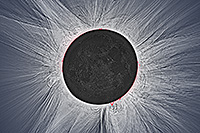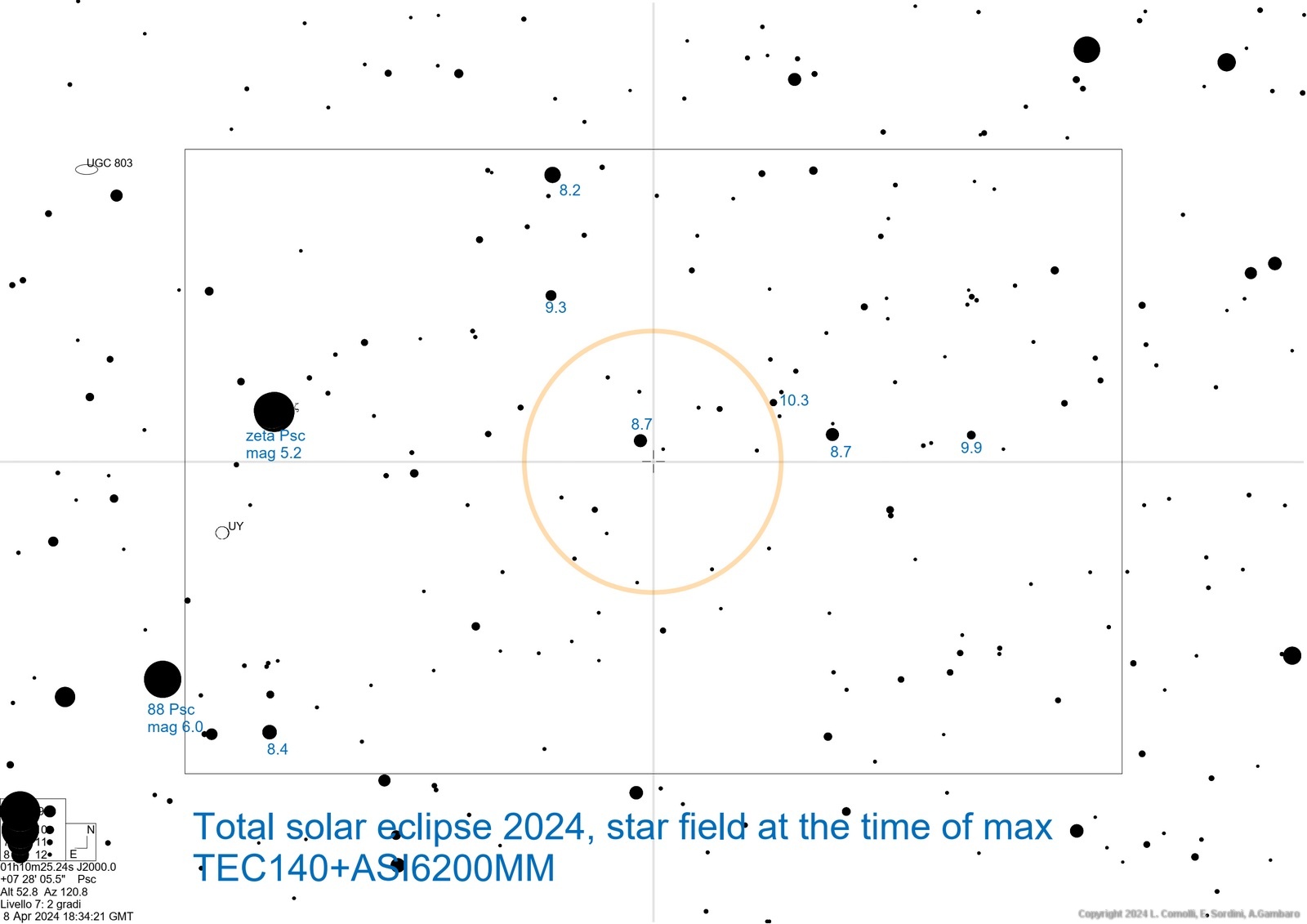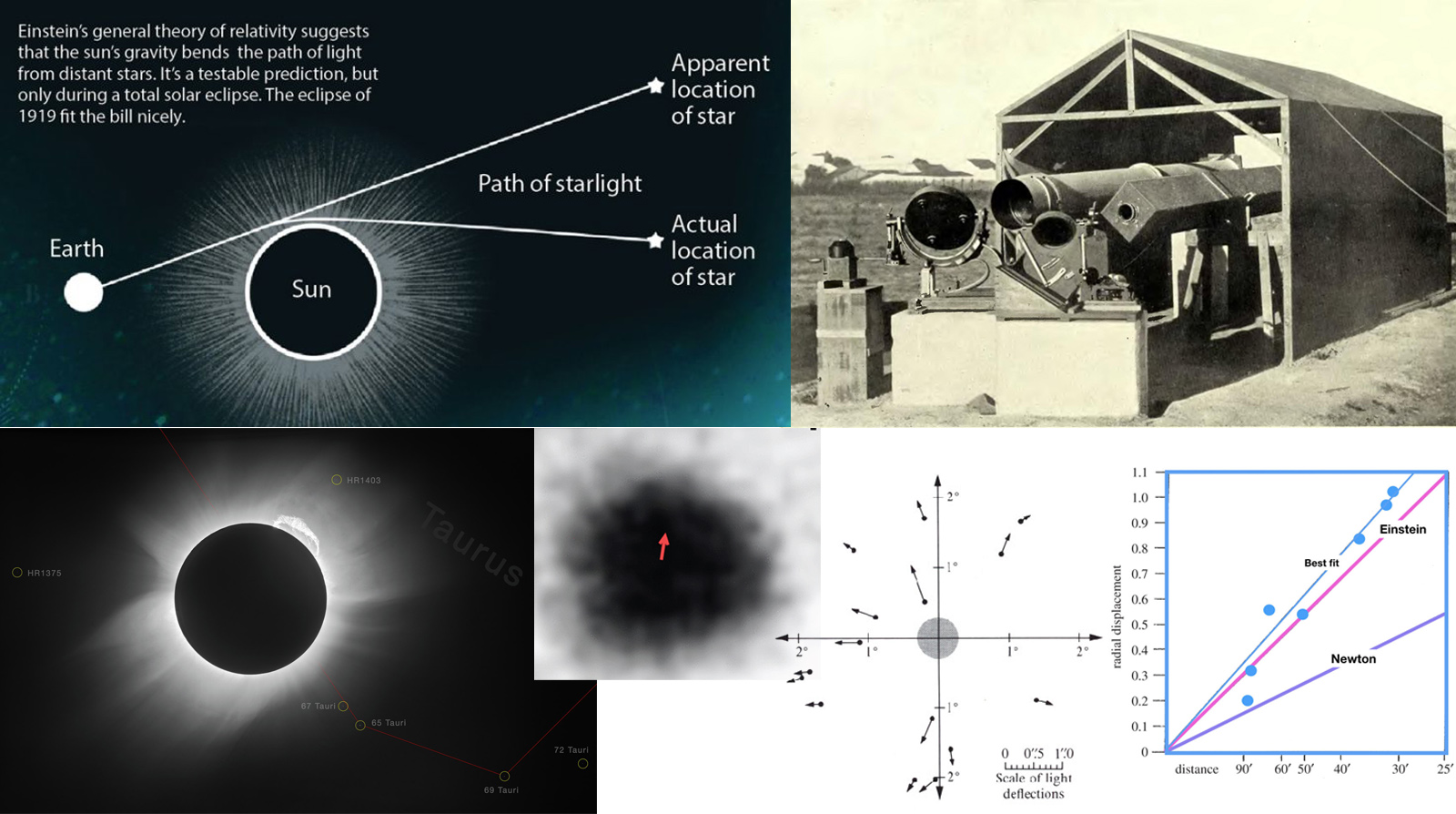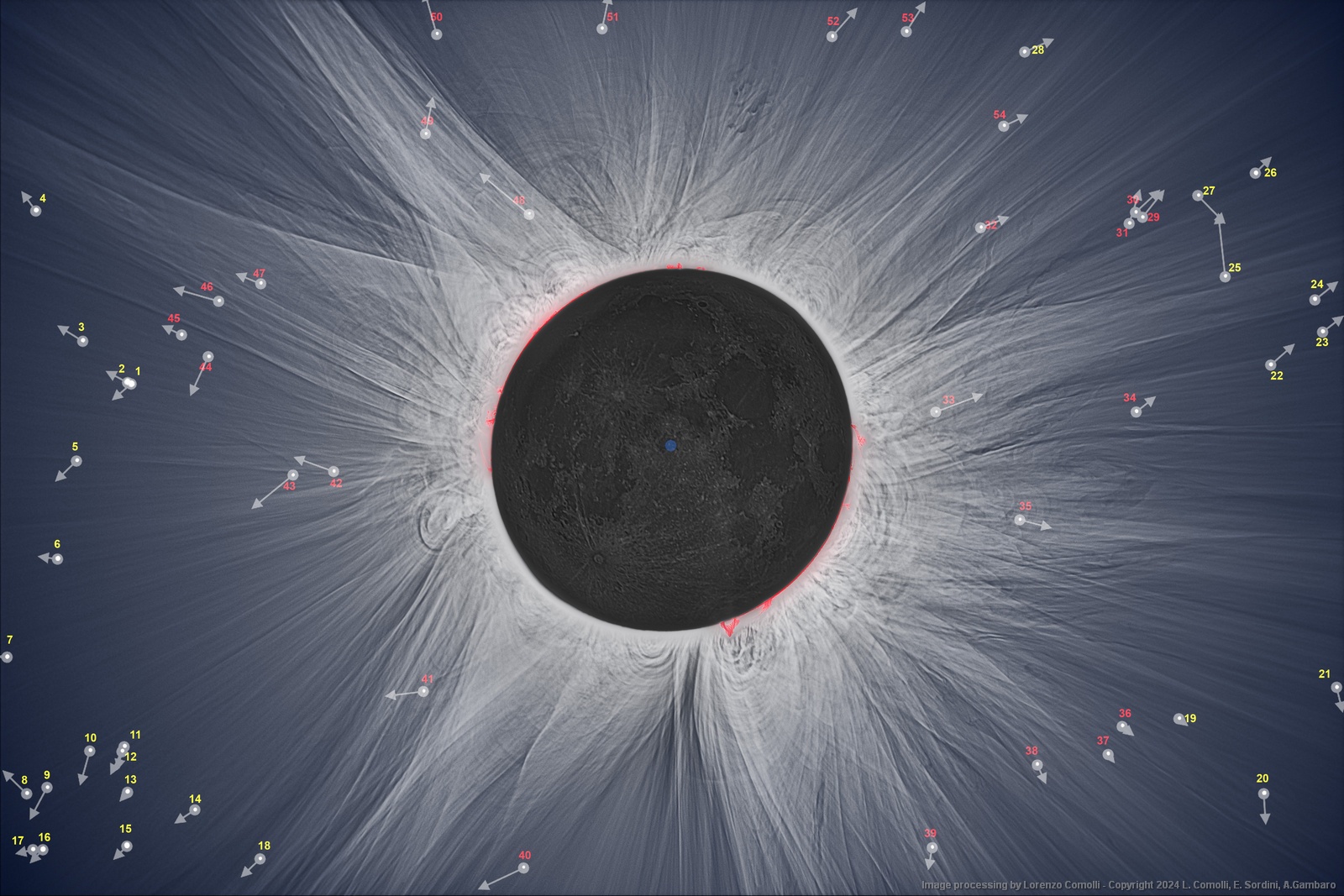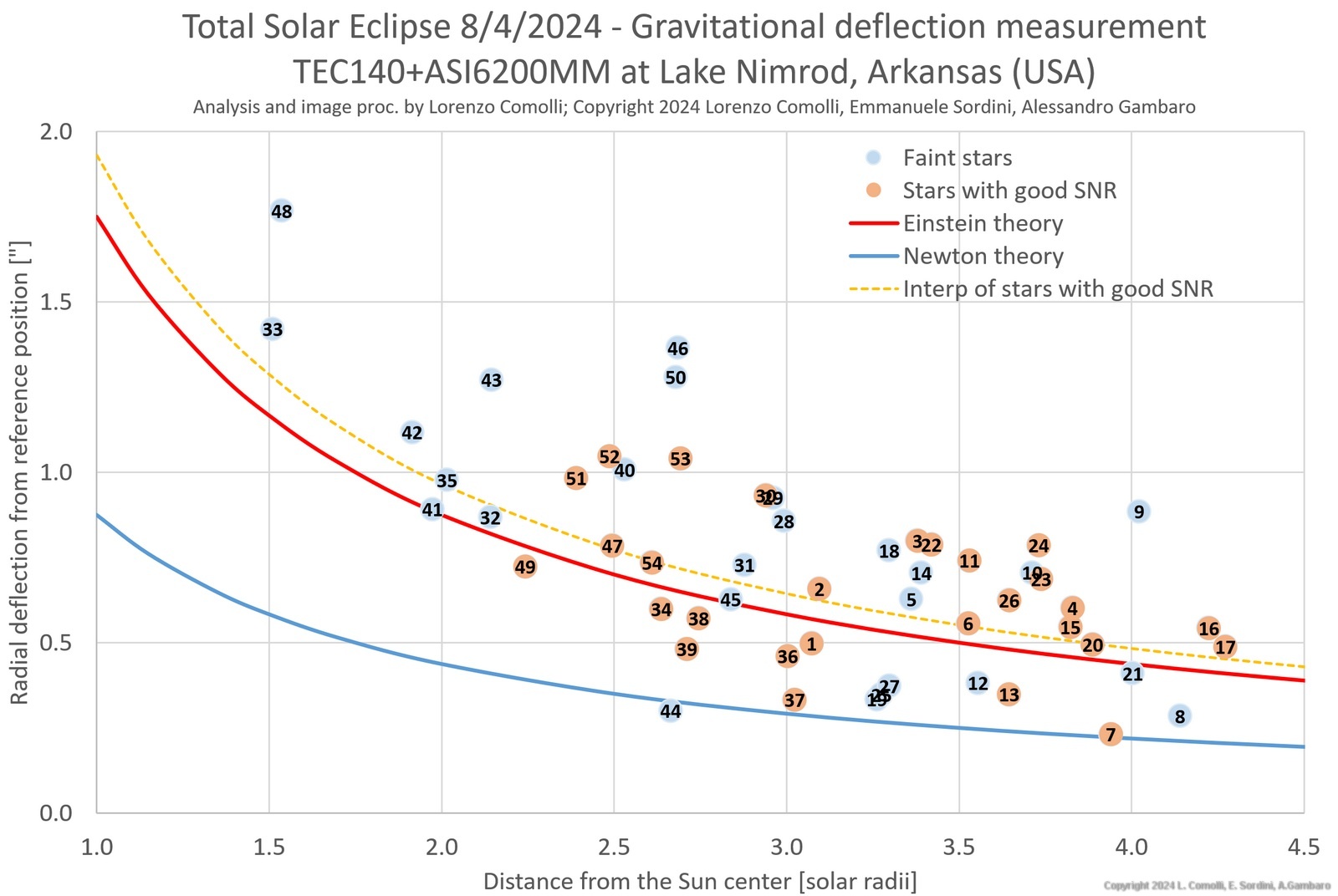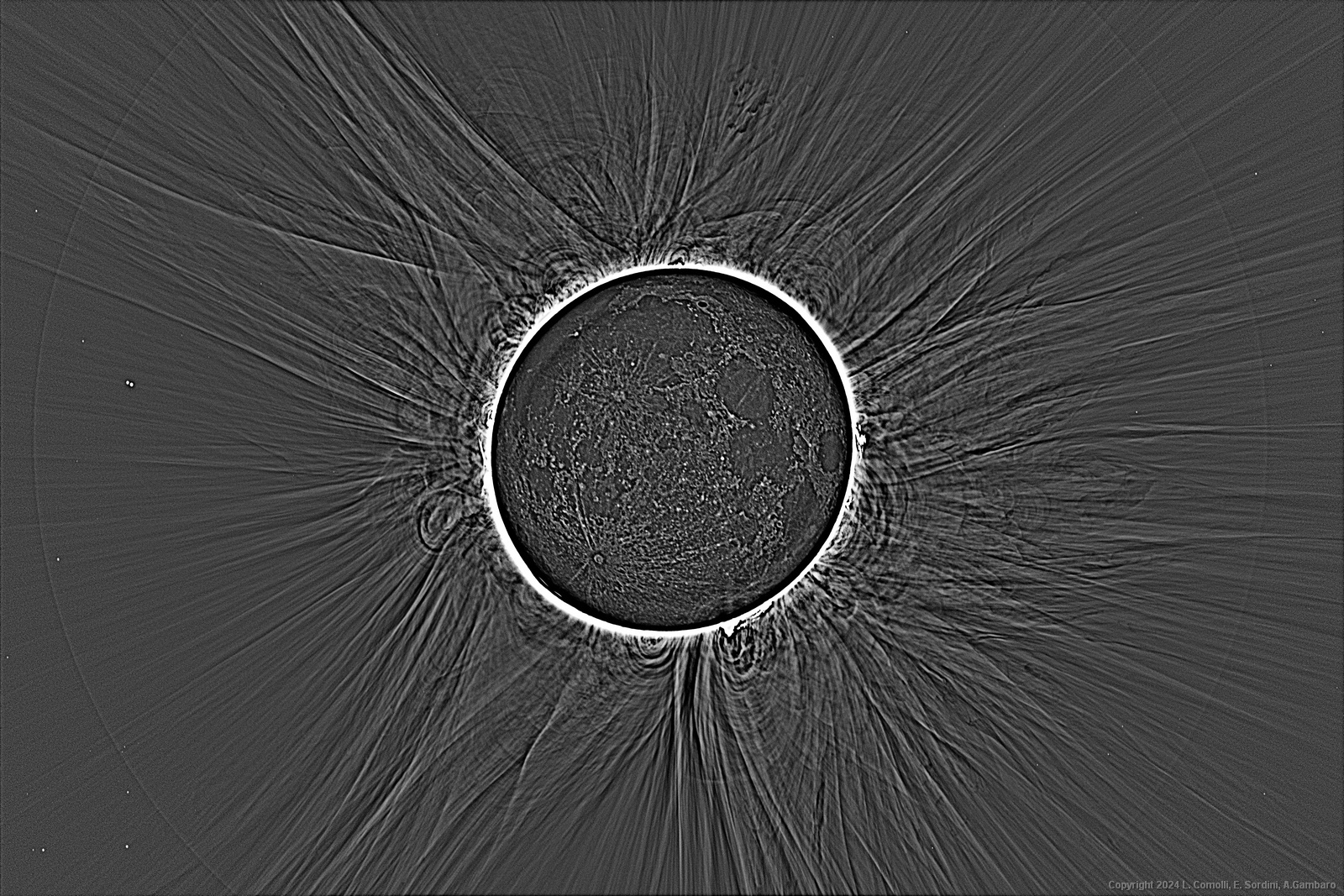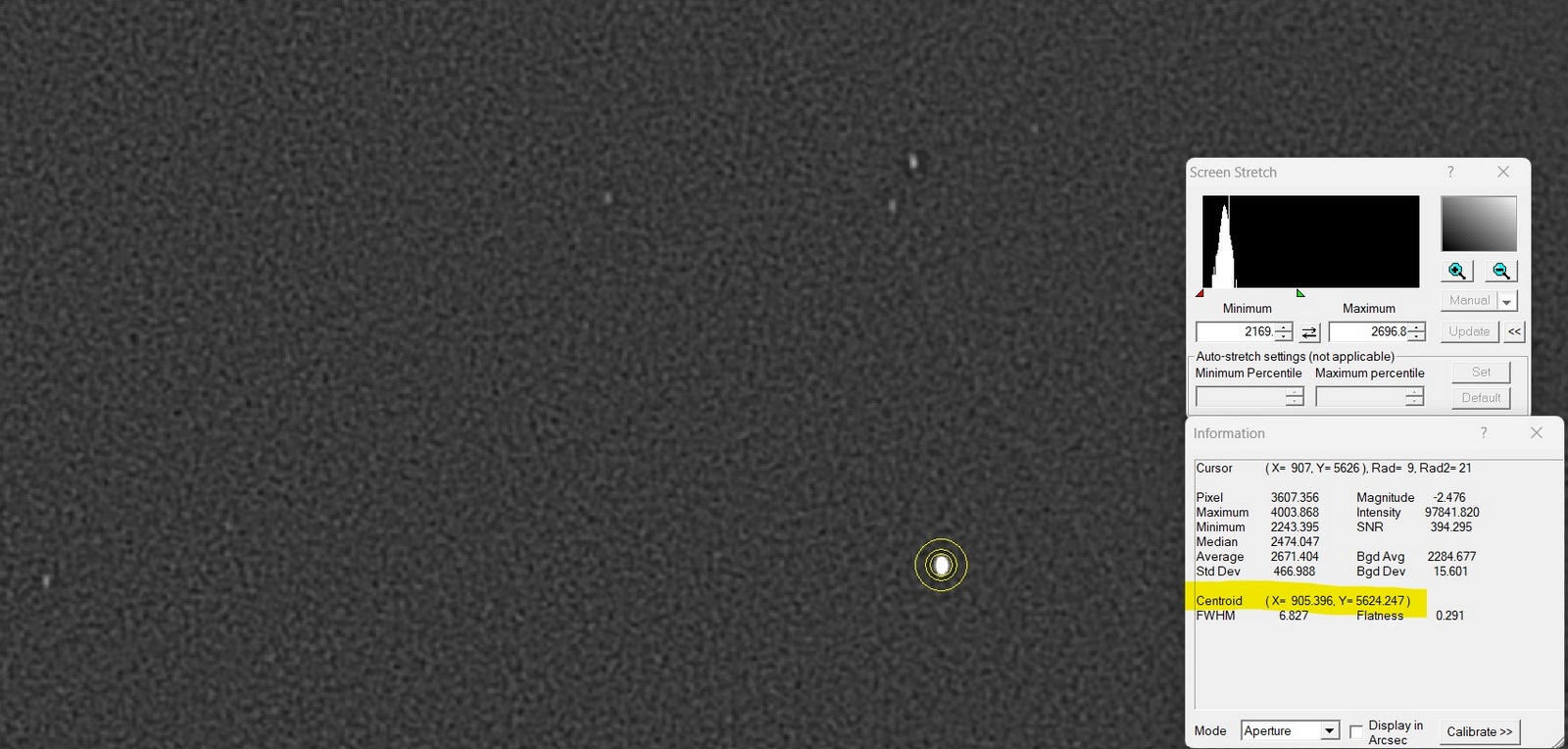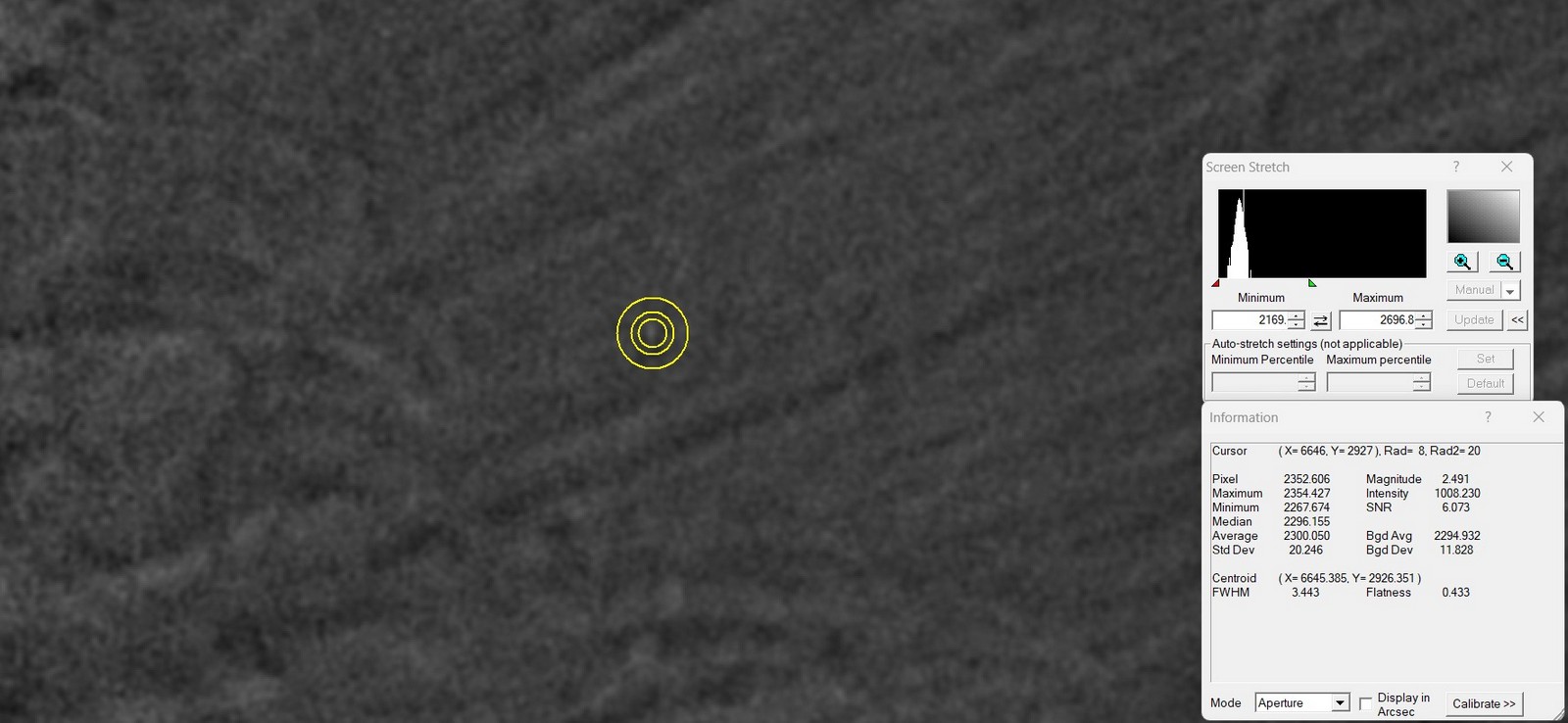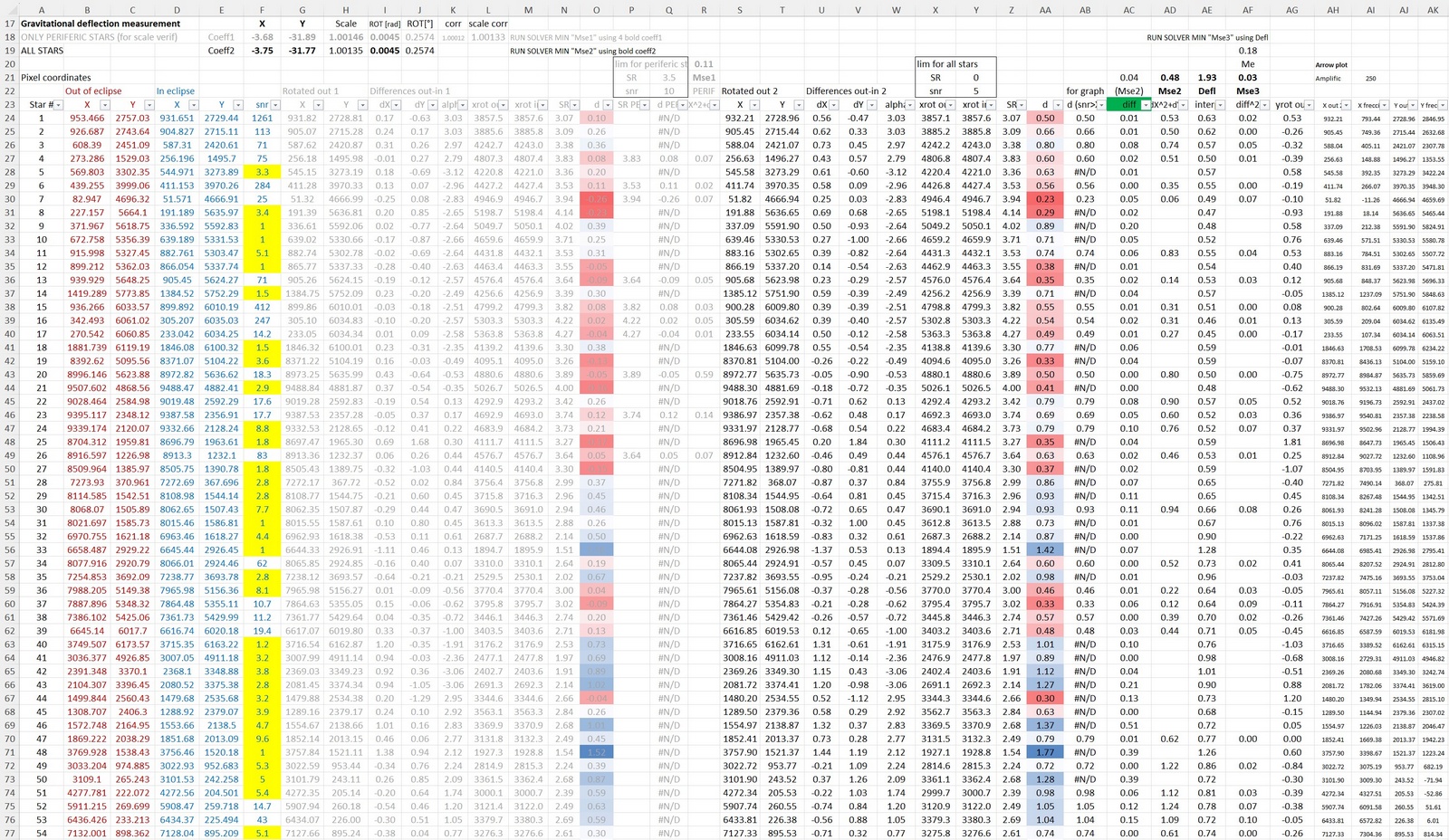The Eddington
experiment of 1919:
1. (top left): graphical explanation of the
gravitational deflection of stars during a total
solar eclipse
2. (top right): the setup of Sobral, Brazil was a
very complicated set of telescopes coupled with
heliostat mirrors
3. (bottom left): one of the images taken in 1919
shows may stars thanks to the very lucky fact that
a couple of very bright stars are located very
close to the Sun’s Edge, i.e. 67 Tau mag 5.2 at
2.0 SR and 65 Tau mag 4.2 at 2.5 SR.
4. (bottom center/left): an extreme close-up of a
star together with an arrow showing the
theoretical deflection value. This clearly shows
how difficult the measurement was, because the
deflection value is far smaller than the star
diameter itself! Star 4, arrow represents a 0.75"
deflection.
5. (bottom-center/right): arrow plot of measured
deflections in the 1922 eclipse from Australia by
astronomers W. W. Campbell and R. J. Trumpler
6. (bottom-right): graph of the measured
deflections in 1919 compared to theoretical
predictions
Image credits:
1. GSFC/NASA
2. This photo by Charles Davidson is provided
courtesy of Graham Dolan.
3. This image is from a PDS (Photometric Data
Systems) machine scan of an eclipse plate made by
John Pilkington at the Royal Greenwich Observatory
in 1999, at the request of and kindly provided by
Dr Robin Catchpole
4. CC BY 4.0 ESO/Landessternwarte
Heidelberg-Königstuhl/F. W. Dyson, A. S.
Eddington, & C. Davidson -
https://www.eso.org/public/images/potw1926a/
5. figure from Misner et al, Gravitation, Freeman
and Co., 1973, 1104
6. Enhanced version of diagram 2 from Dyson et al.
1920,
https://eclipse1919.org/index.php/the-expeditions/11-announcing-the-results
|
